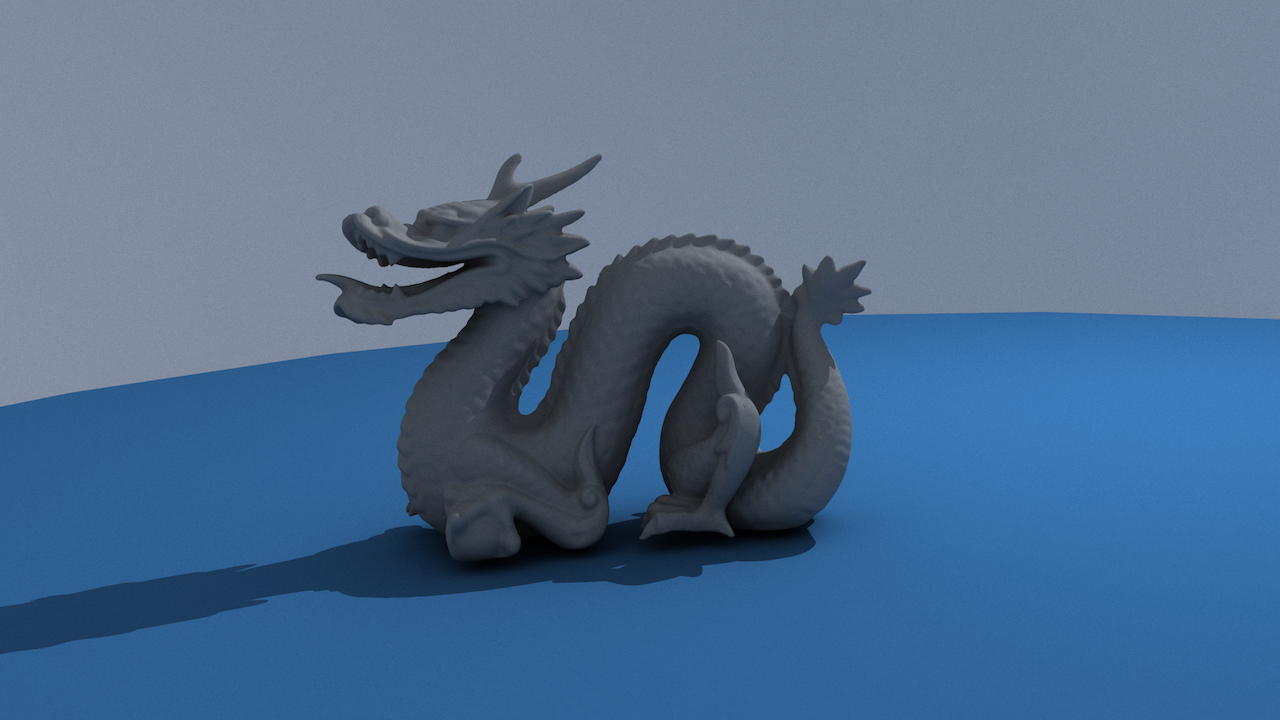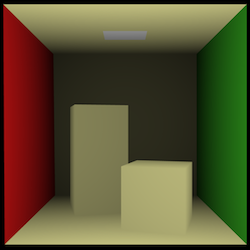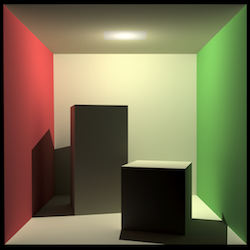A Collection of Unbiased Renderers
Build
> mkdir build
> cd build
> cmake ..
> make # build renderers
> make test # optional: run testsRender
> ./pathtracer ../scenes/cornell_box.blend \
--width 320 \ # image width in pixels
--max-depth 3 \ # max number of ray bounces
--monte-carlo-samples 1 \ # number of samples for ray bounce
--pixel-samples 8 > cornell_box.pbm # numer of samples per pixel
Loading scene...
Loading triangles and building kd-tree...
Rendering ■■■■■■■■■■■■■■■■■■■■ 100.00%
Triangles : 36
Kd-Tree Height : 0
Rays : 2632399
Rays (primary) : 819200
Rays/sec : 129419
Loading time : 0.00 sec
Rendering time : 20.34 secThe renderers output the image as PBM to stdout. It can be easily converted with ImageMagick.
> convert cornell_box.pbm cornell_box.pngGenerated with:
./raycaster ../scenes/cornell_box.blend 3840 > cornell.pbm
convert -resize 640x640 -interpolate bicubic cornell.pbm cornell.png
We just use the distance to the eye of the camera as a light measure. So there is no real lighting.
Generated with:
./raytracer ../scenes/cornell_box.blend -w 3840 --max-depth 3 > cornell.pbm
convert -resize 640x640 -interpolate bicubic cornell.pbm cornell.png
We don't load material information yet. Every surface has the same reflectance. Resizing the image is a simple antialiasing method.
Generated with:
./pathtracer ../scenes/cornell_box.blend -w 3480 --max-depth 3 -m 4 --pixel-samples 128 > cornell_box_3480_3_4_128.pbm
convert cornell_box_3480_3_4_128.pbm cornell_box_3480_3_4_128.png
Overall brightness is corrected in an external program. Since we are using a point light, the original picture is slightly too dark. The rendering time on 8 cpus was ~28 hours.
Generated with:
./pathtracer ../scenes/stanford_dragon.blend -w 1920 --max-depth 3 -m 4 --pixel-samples 128 > stanford_dragon.pbm
convert stanford_dragon.pbm stanford_dragon.png
It took roughly 26 hours to render. The Blender file can be found here.
The cornell box is modeled in Blender using the specifications on http://www.graphics.cornell.edu/online/box/data.html. The camera and distances are exactly the same. The colors may be different, since we did not transform the original color definitions from the spectral space to rgb. Feel free to use it in your projects.
[RB06] Richard P. Brent. Some Long-Period Random Number Generators using Shifts and Xors, In ANZIAM Journal. 48: C188–C202, July 2006.
[CW93] Michael F. Cohen and John R. Wallace. Radiosity and Realistic Image Synthesis, Academic Press Inc., 1993.
[HH11] M. Hapala and Vlastimil Havran. Review: Kd-tree Traversal Algorithms for Ray Tracing. In Computer Graphics Forum, Volume 30, Issue 1, pages 199–213, March 2011.
[WH06] Ingo Wald and Vlastimil Havran. On building fast kd-Trees for Ray Tracing, and on doing that in O(N log N). SCI Technical Report 2006-009.




